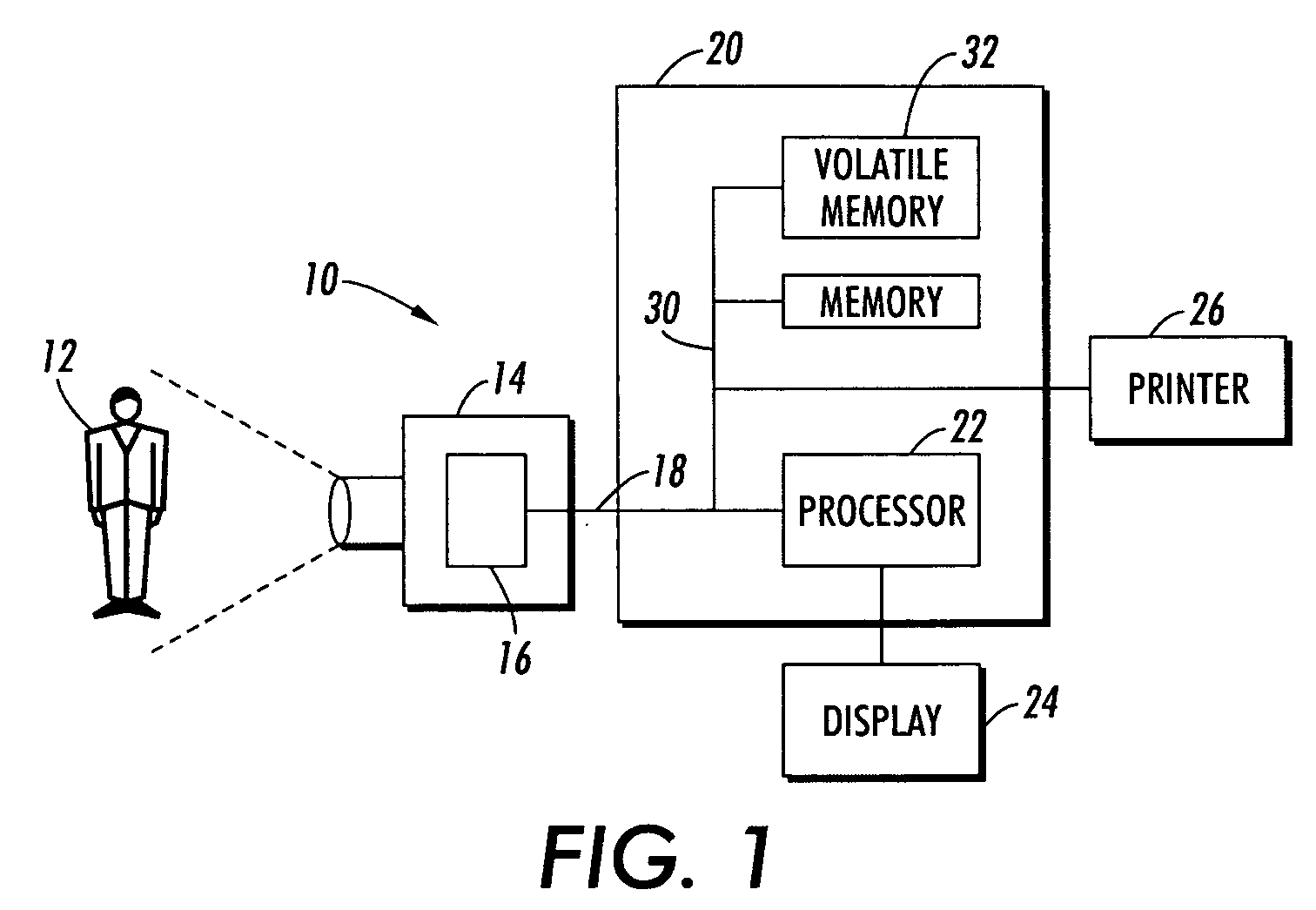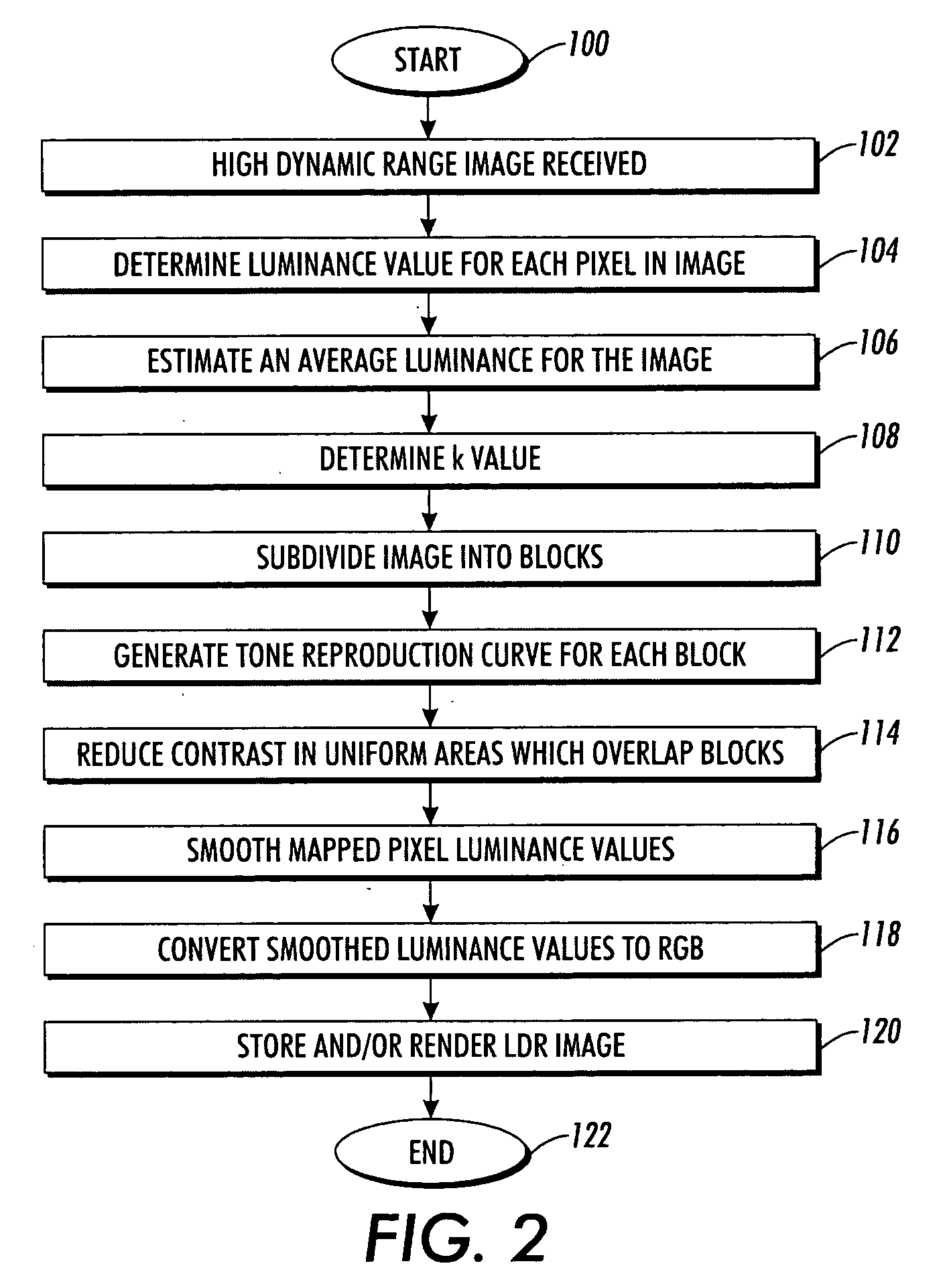Histogram adjustment for high dynamic range image mapping
- Summary
- Abstract
- Description
- Claims
- Application Information
AI Technical Summary
Problems solved by technology
Method used
Image
Examples
Embodiment Construction
[0020]The exemplary embodiment relates to a system and method for compression of high dynamic range images to images with a lower dynamic range which retains a pleasing and realistic appearance of high dynamic range scenery when rendered on low dynamic range devices.
[0021]The technique is suited to use in a fully automated, fast tone reproduction method that reproduces local contrast and fine details of the sceneries without introducing artifacts.
[0022]In various aspects, the method includes automatically setting the overall brightness (luminance) of the mapped high dynamic range image in an initial logarithmic dynamic range compression. In various aspects, local histograms are adjusted to reproduce the local contrast and details of high dynamic range image based on a windowed application approach. Noise artifacts may be avoided or reduced by controlling the degree of contrast enhancement in different windows according to the relative uniformity inside the window. The method is able...
PUM
 Login to View More
Login to View More Abstract
Description
Claims
Application Information
 Login to View More
Login to View More - R&D
- Intellectual Property
- Life Sciences
- Materials
- Tech Scout
- Unparalleled Data Quality
- Higher Quality Content
- 60% Fewer Hallucinations
Browse by: Latest US Patents, China's latest patents, Technical Efficacy Thesaurus, Application Domain, Technology Topic, Popular Technical Reports.
© 2025 PatSnap. All rights reserved.Legal|Privacy policy|Modern Slavery Act Transparency Statement|Sitemap|About US| Contact US: help@patsnap.com



